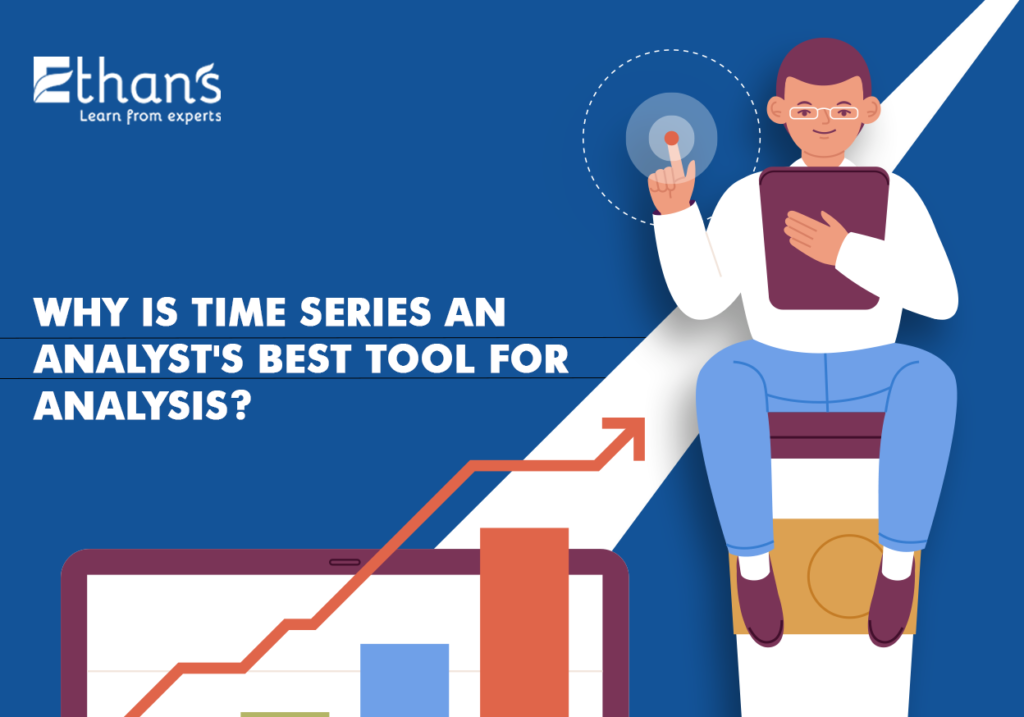Effective data analysis is one of the cornerstones of every organization’s success in the contemporary business environment. To do so and drive optimal value from the available data, analysts use various analytical methods. One of them is time series data analysis. However, precisely, what makes time series one of the best analytical methods for analysts? As an aspiring analyst looking to pursue data analysis courses in Pune, understanding it can help you use time series more effectively. Here’s more to it.
What is Time Series Analysis?
Time series analysis is a precise way of analyzing a sequence of data points gathered over a time interval. Instead of merely recording the data points intermittently or randomly, it allows analysts to record data points across consistent intervals over a set period. Nevertheless, time series analysis doesn’t restrict itself to collecting data over time. It also shows how variables change over time. Time proves a critical variable as it shows data adjustments over the course of data points and the outcomes. It offers an additional information source and an order of dependencies between the data being analyzed.
Generally, time series requires several data points to ensure reliability and consistency. It allows analysts to have a considerable representative sample size. Additionally, the method enables analysts to ensure that patterns discovered aren’t outliers and understand that patterns can also contribute to seasonal variance. Furthermore, analysts can use time series data to make forecasts, based on historical data.
Benefits of Time Series Analysis – Why Developers Use It?
Analysts use time series to help businesses comprehend factors contributing to trends or systems patterns over a particular time frame. By using data visualizations, organizations can see seasonal trends and unearth the reasons for the occurrence of various trends.
Besides, while analyzing data across intervals, businesses can use time series to forecast the probability of future events. It can highlight potential changes in the data to understand data variables better and make more informed and near-accurate forecasts. With that said, let’s look at some benefits of time series analysis that make it an excellent analytical method for analysts.
-
Pattern Identification
Time series helps analysts identify patterns over a particular period. Let’s understand this with an example. For instance, retail is a trend and pattern-driven business. The high seasonal and demand fluctuations in this industry require retailers to stay abreast of these changes and ensure continuous analysis. Time series analysis can help here. It can help retail data analysts identify seasonal sales patterns, and comprehend demand and supply equations across a particular timeframe to make inventory and market-related decisions.
On the other hand, even when it comes to oil and gas companies, analysts can identify and decipher consumption trends to make informed usage forecasts within a particular region and make decisions to optimize production. Another example is that of the stock market, wherein data analysts can help identify market shifts and help the user or business respond to them optimally.
-
Data Cleanup
Another significant advantage of time series analytics is that it allows an analyst to help remove noisy data and outliers that cloud an analyst’s understanding of trends and consequently affect the decision-making process. The analysis method helps increase the reliability of the data and makes it more interpretable with techniques like smoothing and seasonality adjustments.
-
Analytical Efficiency
As stated above, time series analysis requires a huge amount of data. However, in some cases, even less data can lead to more insights. It is because time series analysis enables data analysts to focus on critical metrics and periods to derive valuable insights. The method lets analysts do so without letting excessively intricate models or datasets overwhelm them and affect decision-making.
-
Improved Data Accuracy and Quality
In addition to the above, data accuracy helps improve data accuracy by identifying and rectifying missing values and anomalies within a particular dataset. It helps improve data integrity and reliability vital for accurate predictions and analysis. With phenomenal data cleaning capabilities, time series help ensure dataset completeness and cleanliness.
Speaking of data quality, techniques like interpolation and extrapolation can help fill gaps and enhance data quality. Thus, cleaner and higher-quality data can enable more accurate and precise data analysis and forecasting.
-
Lowered Noise Impact
Time series analysis helps reduce the impact of noise on datasets. With that, it enhances the accuracy of forecasts and analytical outcomes. As mentioned earlier, the spots and removes outliers that often cause the noise to distort the true signal in the data.
Furthermore, analysts can use time series analysis to identify missing values, enabling precise imputation and smoothing to build a more logical dataset. Analyzing percentage differences between observations can enable analysts to minimize the impact of noisy data points and facilitate a cleaner analysis.
Role of Python in Time Series Analysis
Python is extensively used for time series due to the several libraries that simplify time series analysis and make it more efficient. These libraries offer numerous functionalities, including data manipulation, visualization, modeling and forecasting. These help you explore underlying patterns and trends in a particular dataset. Some key Python libraries used for time series analysis include the following.
- pandas: This is a preferred library for data manipulation and analysis, It provides user-friendly data structures and functions to work with structured data.
- numpy: numpy is a basic package for scientific computing with robust N-dimensional array objects and tools for integrating C/C++ and Fortran code.
- matplotlib: This one is a plotting library that produces quality figures in different formats. It is an apt library for data visualization.
- statsmodels: It is a library that enables you to estimate statistical models, perform statistical tests, and discover statistical data.
- yfinance: With this library, you can retrieve the latest financial data from Yahoo Finance.
- scikit-learn: This is a versatile Python library with simple and efficient tools for ML, data analysis and data mining.
Conclusion
Understanding time series analysis is one of the essential aspects of a data analyst’s work profile. In a nutshell, time series analysis helps data analysts enhance data quality and make more value from the available data. We hope the above helped you gain basic insights into the analytical method and prove useful while pursuing a data science course for beginners. As for comprehensive data analytics courses in Pune, you’ve got Ethans Tech. Call us at +91 95133 92223 to learn about our data analytics courses.




